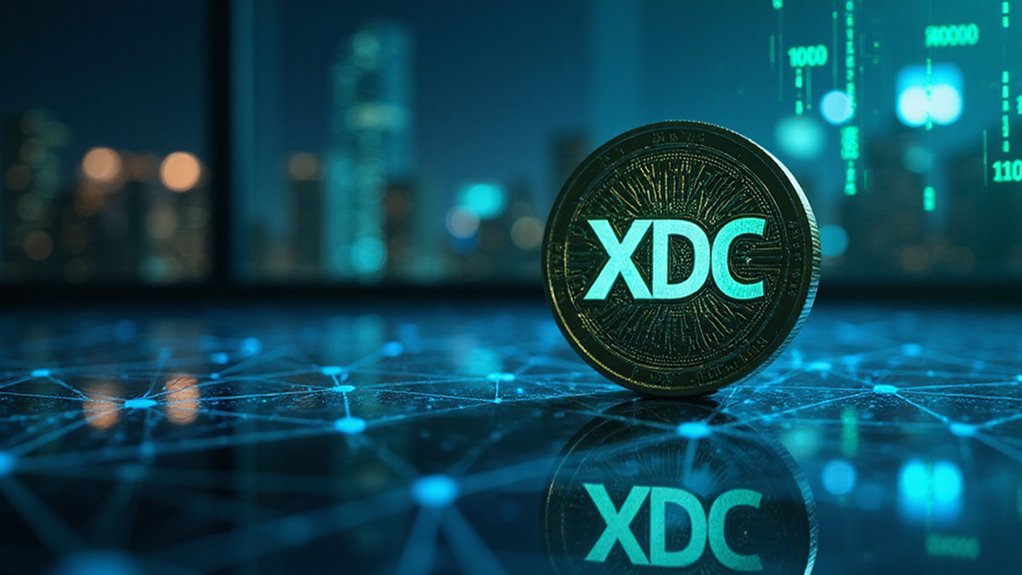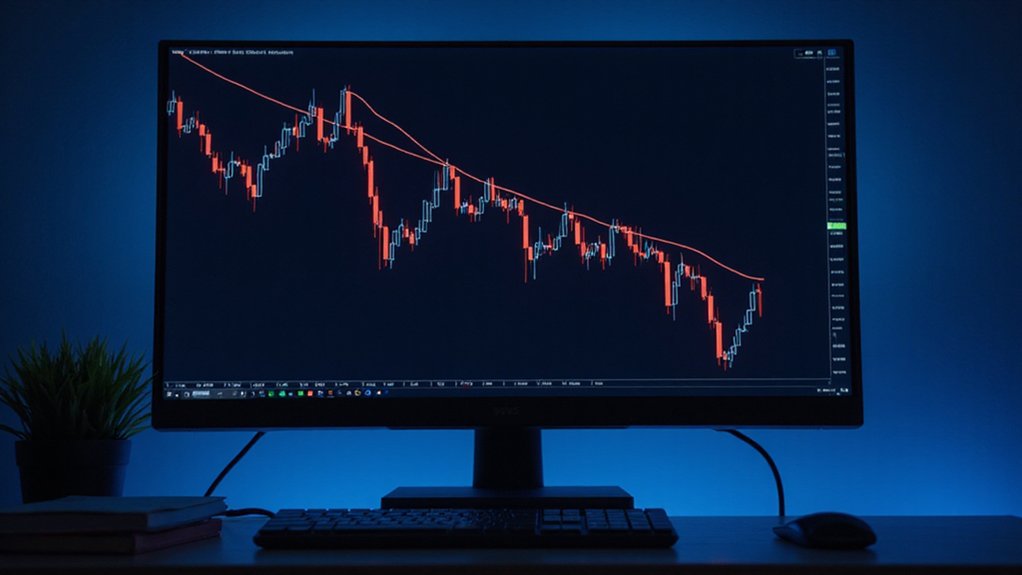XDC Network is an EVM-compatible Layer-1 blockchain that uniquely bridges institutional requirements with decentralized capabilities. Designed for trade finance and real-world asset tokenization, it delivers impressive performance (2,000+ TPS with sub-2-second finality) at minimal cost. Its XDPoS consensus mechanism requires validators to stake 10 million XDC tokens, ensuring security while maintaining energy efficiency. This hybrid architecture enables regulatory compliance without sacrificing the immutability that makes blockchain technology so transformative for global finance.

A powerhouse in the enterprise blockchain domain, XDC Network stands as a specialized EVM-compatible Layer-1 protocol engineered expressly for institutional adoption in trade finance and real-world asset tokenization.
Its hybrid architecture—deftly merging public and private ledger characteristics—empowers enterprises to maintain compliance while benefiting from decentralized immutability.
This architectural elegance isn’t merely theoretical; the network delivers impressive 2,000+ transactions per second with sub-2-second finality, a performance profile that traditional finance veterans (historically skeptical of blockchain’s practical utility) find increasingly difficult to dismiss.
Performance isn’t theoretical—2,000+ TPS with sub-2-second finality convinces even the most skeptical financial traditionalists.
The network’s XDPoS consensus mechanism represents a thoughtful evolution of traditional delegation models, requiring validator masternodes to stake 10 million XDC tokens—a substantial commitment that aligns network security with validator interests. This approach enhances asset transparency across tokenized real-world assets, creating a secure foundation for institutional adoption.
With 108 active validators rotating between active and standby roles as of early 2025, the system maintains resilience against Byzantine failures while consuming negligible energy compared to Proof of Work alternatives.
The recent XDC 2.0 upgrade, spearheaded by Princeton University researchers, has further hardened the system’s security posture.
Transaction costs on XDC Network hover below $0.0001, a fee structure that enables micro-transactions at scale—critical for supply chain applications where margins remain razor-thin.
The network’s spontaneous block finality eliminates reorganization risks that plague slower chains, a feature particularly valuable in trade finance where settlement certainty carries regulatory implications.
Beyond technical specifications, XDC’s expanding ecosystem now encompasses sophisticated RWA tokenization (from invoices to carbon credits), CBDC experimentation frameworks, and compliance-enhanced DeFi protocols. The platform excellently addresses the global trade finance needs through its comprehensive digital solutions.
The XDC Foundation’s stewardship since 2021 has maintained the protocol’s open-source ethos while cultivating institutional partnerships.
The network’s native XDC token functions both as a utility medium for transaction fees and as staking collateral, creating natural deflationary pressure as adoption increases.
With forensic monitoring tools satisfying regulatory requirements, XDC Network has positioned itself at the intersection of blockchain innovation and institutional acceptability—a precarious balance few projects maintain with such apparent ease.
Frequently Asked Questions
How Does XDC Compare to Other Enterprise Blockchain Solutions?
XDC outperforms many enterprise blockchain competitors through its hybrid architecture that delivers impressive metrics—2,000 transactions per second with 2-second block times and 6-second finality.
Its XDPoS consensus mechanism provides security while maintaining near-zero transaction fees and energy consumption 10 million times lower than Bitcoin.
Unlike some enterprise solutions, XDC offers true interoperability with major blockchains, especially Ethereum, while its scalability accommodates high-volume use cases in trade finance and supply chain management without sacrificing decentralization principles.
What Are the Key Security Features of XDC Network?
The XDC Network employs a multilayered security architecture that would make even the most paranoid cybersecurity analyst nod in approval.
Its XDPoS consensus mechanism inherently provides spam resistance while maintaining decentralized validation.
Beyond this foundation, the network implements state-of-the-art encryption, multi-factor authentication, and immutable audit trails.
Blockchain analytics enable continuous monitoring for potential threats, while the hybrid architecture offers controlled access for sensitive enterprise data—striking that elusive balance between transparency and confidentiality that enterprises perpetually seek.
Can Individuals Mine or Stake XDC Tokens?
Individuals cannot mine XDC tokens in the traditional sense, as the network operates on Delegated Proof of Stake (XDPoS) rather than Proof of Work.
However, staking opportunities abound—token holders automatically qualify as Tier 1 members, while those with larger holdings and proper vetting can ascend to Tiers 2 and 3, enabling node hosting participation.
Most retail investors opt for delegating their tokens to established masternodes, thereby earning proportional rewards while contributing to the network’s consensus mechanism.
How Is Xdc’s Governance Structure Organized?
XDC’s governance structure combines traditional blockchain democracy with innovative hybrid elements through XDCDAO.
This on-chain organization employs tamper-proof voting mechanisms where token holders influence network evolution, while validators (selected via delegated proof-of-stake) maintain operational integrity.
The system’s brilliance lies in its multi-tiered approach—balancing public accessibility with private permissioned elements for enterprise needs.
This hybrid consortium model fundamentally creates a governance framework that’s both decentralized enough for crypto purists and structured enough for institutional participants.
What Major Partnerships Has XDC Network Established?
XDC Network has forged several strategic alliances that buttress its enterprise credentials.
Its partnership with Archax—a UK FCA-regulated exchange—has yielded tokenized money market funds from financial heavyweights like BlackRock and Fidelity.
Simultaneously, integration with Singapore’s IMDA TradeTrust initiative positions XDC at the vanguard of digitizing global trade documentation.
These institutional partnerships, rather than merely decorative badges, provide XDC with legitimate pathways toward mainstream financial adoption and real-world utility.









